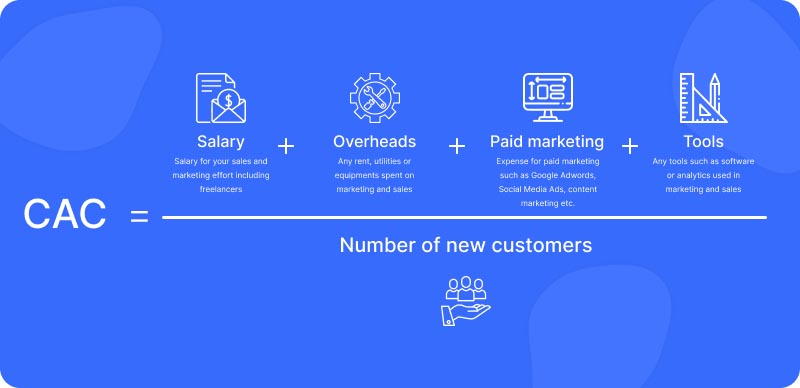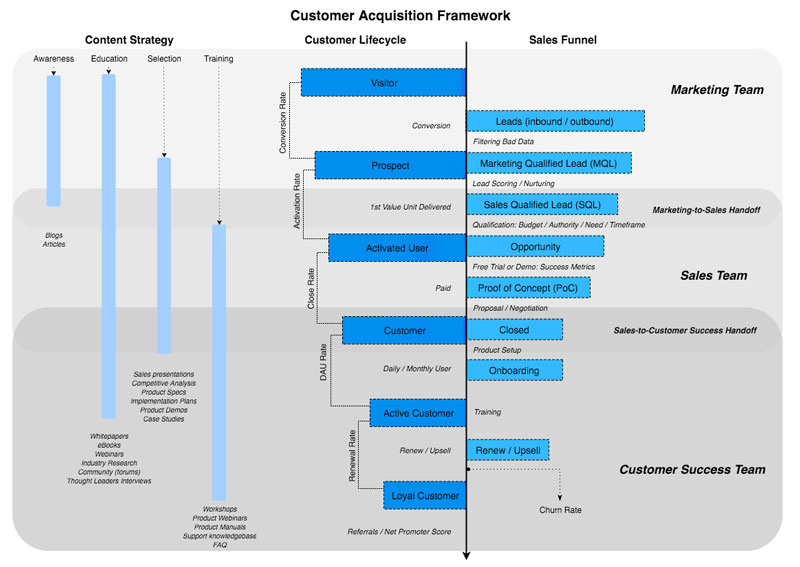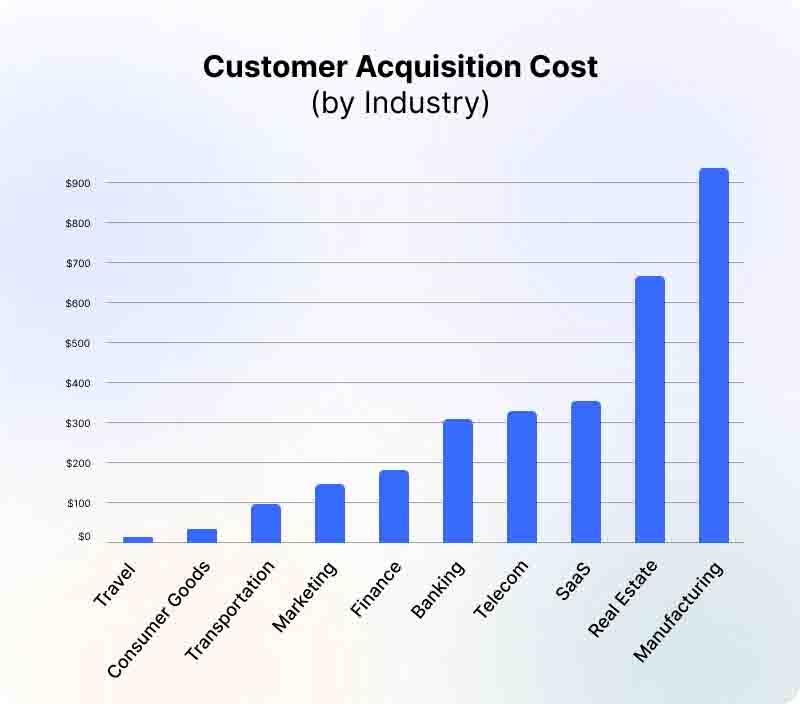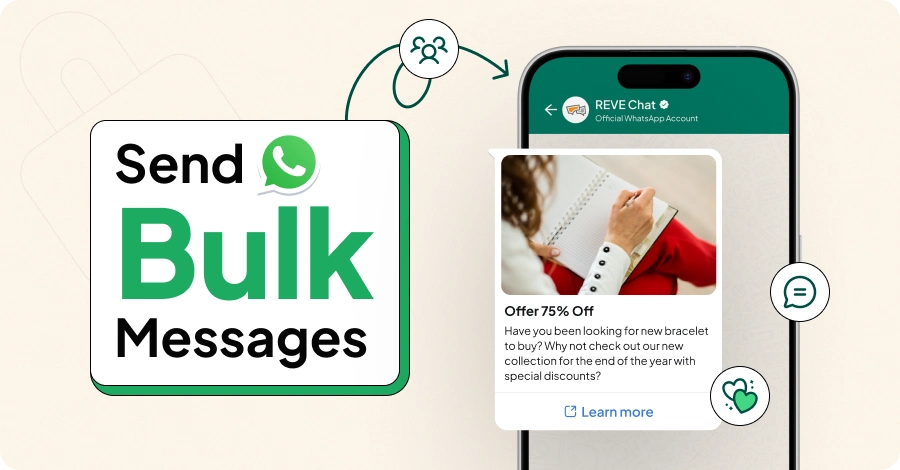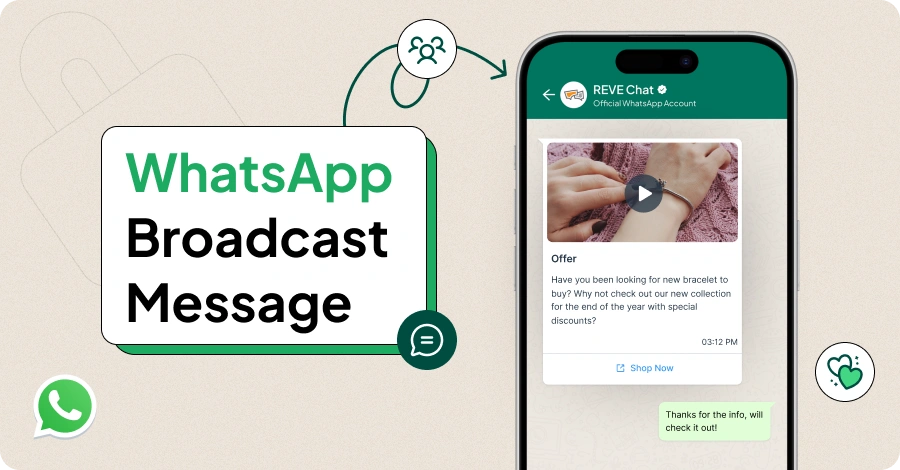How to Calculate Customer Acquisition Cost & How to Improve it?
- April 20, 2022
- 16 mins read
- Listen

Did you know that it costs five times as much to attract a new customer than to keep an existing one?
The first rule of any business is to retain customers and build a loyal relationship with them, thereby avoiding customer acquisition costs.
Customer acquisition cost (CAC) has become a crucial business metric as it helps businesses determine the resources they will need to attract new customers and continue their growth.
Acquiring your first customer is a great milestone for every business. While it’s no secret that getting people to buy from you is critical, you also need to focus on long-term growth tactics if you want to maintain growth.
For any company, thinking about your customer acquisition cost (CAC) can be confusing, frustrating, and perhaps a bit scary.
But it really doesn’t have to be.
Customer acquisition cost is hence the amount of money your company spends to acquire customers. It also helps in measuring the return on investments on the efforts it took to grow your business’s clientele.
If you want your business’s customer base to expand and still make net profits, you need to understand all that there is to know about customer acquisition costs in marketing.
Definition of Customer Acquisition Cost
Customer Acquisition Cost (CAC) refers to the total resources and costs incurred for acquiring a new customer.
It encompasses the cost of acquiring business across all your marketing efforts—online and offline, billboards and media placements, Google Ads and Facebook ads, and even the cost of a store-front sign over a specific period to acquire new customers.
Customer acquisition professionals use specific strategies & techniques to get potential customers to take action. The main goal is to create a systematic, sustainable customer acquisition framework to acquire new customers and grow revenue for the business.
Ideally, the customer acquisition cost should be as low as possible; however, several factors affect CAC like brand awareness and your existing ways of marketing.
What is a Good Customer Acquisition Cost?
The definition of a “good” Customer Acquisition Cost (CAC) can vary significantly depending on the industry, business model, and the specific circumstances of a company. In general, a lower CAC is desirable because it indicates that a business is acquiring customers at a lower cost, which can contribute to higher profitability. However, what is considered a good CAC can depend on several factors:
- Industry Standards: It differs by industry. Some industries naturally have higher acquisition costs due to competitive landscapes, longer sales cycles, or other factors. It’s important to compare your CAC to industry averages to determine how well your business is performing relative to peers.
- Business Model: Different business models may have different acceptable CAC levels. For example, a subscription-based business might be willing to incur a higher upfront cost to acquire a customer.
- Customer Lifetime Value (LTV): You have to consider the customer acquisition cost vs lifetime value. If the CAC is significantly lower than the LTV, it suggests that the business is acquiring customers profitably. However, the acceptable ratio between CAC and LTV can vary based on business goals and financial considerations.
- Stage of Growth: Early-stage startups might have higher CAC as they invest in establishing their brand and acquiring initial customers. As a business matures and gains economies of scale. It may be able to optimize its CAC.
- Marketing Channels: It can vary depending on whether a business is acquiring customers through social media advertising, content marketing, paid search, partnerships, etc. For your business, evaluating the effectiveness of each channel and optimizing accordingly is crucial.
Why CAC is Important?
Its importance lies in its ability to provide insights into the efficiency and sustainability of a company’s growth strategies. Here are some reasons why CAC is important:
- Financial Efficiency: It helps businesses understand how much money they need to spend to acquire a new customer. This information is essential for financial planning and budgeting to allocate resources appropriately and optimize marketing spending.
- Profitability Analysis: Comparing the CAC with the lifetime value of a customer (LTV), businesses can assess the long-term profitability of acquiring a customer. If the CAC is significantly lower than the LTV, it indicates a potentially lucrative customer base.
- Performance Measurement: It is a key performance indicator (KPI) that helps measure the effectiveness of marketing and sales efforts. Tracking changes in CAC over time allows businesses to evaluate the success of their customer acquisition strategies and make data-driven adjustments.
- Scaling Strategies: If the cost of acquiring a customer is too high, scaling too quickly may result to unsustainable expenses. Businesses can ensure more sustainable and controlled growth after CAC optimization.
- Marketing ROI: It provides insights into the return on investment (ROI) for various marketing channels. Businesses can identify which channels are most cost-effective and allocate resources accordingly for maximum impact.
- Customer Segmentation: Analyzing CAC for different customer segments can help businesses identify the most profitable and sustainable customer groups. This information enables targeted marketing efforts to focus on high-value segments.
- Competitive Benchmarking: Comparing CAC with industry benchmarks allows businesses to gauge their competitiveness in the market. If CAC is significantly higher than industry averages. It may indicate inefficiencies that need to be addressed.
- Financial Health: It is a critical factor in assessing the overall financial health of a business. It influences key financial ratios and metrics, to help stakeholders make informed decisions about the company’s sustainability and growth potential.
How to Improve Customer Acquisition Cost?
Reducing Customer Acquisition Cost (CAC) involves optimizing your marketing and sales strategies to acquire customers more efficiently and cost-effectively. Here are several strategies to help improve your CAC:
- Targeted Marketing Campaigns: You need to identify and target your ideal customer profile to ensure your marketing efforts reach the most relevant audience. You can use data analytics and customer segmentation to personalize marketing messages and campaigns.
- Content Marketing: Focus on developing high-quality, relevant, and valuable content to attract and engage your target audience. You need to utilize content marketing to establish your brand as an authority in your industry, building trust with potential customers.
- Social Media Optimization: Optimize your social media presence to reach your target audience effectively. You can create highly targeted and cost-effective campaigns on social media advertising platforms.
- Search Engine Optimization (SEO): You should invest in SEO to improve your website’s visibility in search engine results to drive organic traffic and reduce the reliance on paid advertising.
- Conversion Rate Optimization (CRO): Your website and landing page optimization is an effective way to improve conversion rates and ensure that a higher percentage of visitors take desired actions.
- Data Analytics: You need to analyze data regularly to understand the performance of different marketing channels and campaigns. You can use these insights to reallocate the budget to the most effective channels and optimize underperforming ones.
- Leverage Technology: You need to utilize marketing automation tools to optimize your marketing processes. In this case, a CRM system can be a better option to track and manage leads and customer interactions.
- A/B Testing: You can conduct A/B testing on various elements of your marketing campaigns (e.g., ad copy, visuals, landing pages) to identify what resonates best with your audience.
Formula of Customer Acquisition Cost
Customer acquisition cost (CAC) shows the exact cost to acquire new customers and how much value they bring to your business. When combined with customer lifetime value (CLV), the metrics help companies determine how viable their business model is.
To use the customer acquisition cost formula you need to know the following below.
- Total amount spent on acquiring new customers (TS): It can include spending on sales, marketing, and revenue operations in a given period
- Total number of new customers acquired (TNC)
The sum of these costs is then divided by the number of customers you acquire.
Hence, the customer acquisition cost formula is really quite simple:
How to Calculate Customer Acquisition Cost?
Calculating customer acquisition involves keen observation of costs involved in the sales and marketing efforts made by the business.
Let’s explain the calculation process with examples for better understanding.
Example 1:
Take a 30-day snapshot of your business and add up all of the costs that were associated with sales and marketing efforts:
- Sales/marketing salaries
- Amount spend on advertising
- Tools/technology (CRM, email software, etc)
- Additional costs or overhead associated
Once you add up all of these expenses. Suppose it totaled $15,000 over 30 days. After that, you have to divide the cost by the number of customers that you gained within that particular period.
Let’s say 150 customers over the last 30 days.
Hence CAC = $15,000 / 150
The CAC = $100
Example 2:
If you are spending $200,000 to acquire 200 customers, then the results will be as follows:
The total cost of customer acquisition will be $1000.
It is probably obvious that the lower customer acquisition cost is generally better. But there is no one-size-fits-all amount that makes sense for every business.
Example of Customer Acquisition Cost
Customer Acquisition Cost (CAC) varies widely across industries and businesses. An E-commerce business example is provided below to give you an idea of how CAC may differ:
1. Paid Advertising (Google Ads, Facebook Ads)
An e-commerce business might invest in paid advertising to target potential customers actively searching for products. Google Ads can be used for search engine advertising, while Facebook Ads can target users based on demographics, interests, and behaviors.
- Cost Components: The cost per click (CPC) or per thousand impressions (CPM) is incurred when users interact with the ads. The overall spend includes ad creation, targeting, and ongoing optimization efforts.
- Optimization Strategies: You can analyze ad performance, refine targeting parameters, test ad creatives, and adjust bids to optimize the advertising budget for maximum conversion efficiency.
2. Content Marketing
E-commerce businesses often invest in content marketing to attract and engage potential customers. This may involve creating blog posts, product reviews, and video content that provide valuable information and showcase products.
- Cost Components: It includes content creation (writing, editing, or video production), distribution, and promotion. This can encompass expenses for hiring writers, and graphic designers, and promoting content on social media or through paid channels.
- Optimization Strategies: Analyze the performance of different types of content, identify what resonates with the audience, and refine content strategies accordingly. You can utilize SEO to increase organic traffic and reduce dependence on paid channels.
3. Influencer Marketing
Collaborating with influencers in the e-commerce space involves partnering with individuals who have a significant following in the target market. They create content showcasing products, and their endorsement can help reach a broader audience.
- Cost Components: Costs include payments to influencers, free products provided for review, and any additional fees for content creation. Negotiating favorable terms with influencers is crucial to manage costs effectively.
- Optimization Strategies: Choose influencers whose audience aligns with your target market. Track the performance of influencer collaborations, measure the return on investment (ROI), and establish long-term relationships with effective influencers.
Customer Acquisition Cost vs Lifetime Value (CLTV)
Both the metrics are vital and both tell how effectively your business is being run, where you are losing money, and where you can improve.
Customer Lifetime Value (CLTV) is perhaps the more coveted metric because it helps you understand bottom-line profit, but, as we discussed, you can’t know your CLV unless you know how much it costs to acquire a customer.
Use these metrics in tandem to generate a more holistic understanding of performance—and remember, don’t be afraid to break each out into more granular measurements of specific parts of your business.
The customer acquisition cost to customer lifetime value, CAC: CLTV ratio measures the relationship between the lifetime value of a customer and the cost of acquiring that customer.
Customer lifetime value tells you the amount of money your customers are paying. It is an important metric because it helps in projecting your company’s worth to competitors and potential customers.
The metric is computed by dividing LTV by CAC. It is a signal of customer profitability, and of sales and marketing efficiency.
*ARPU refers to the Average Revenue Per User
Here is an example of CAC vs CLTV.
Consider a SaaS company that had a gross margin of 75% and monthly customer churn of 2%, and each customer spent an average of $40 with you every month.
The calculation would look like this:
75% X ( 1 / 2% ) X $40 = $1,500 CLTV
Note:
Measuring and optimizing the CAC metric can be challenging on a number of fronts, especially if you’re attempting to attribute acquisition costs to individual accounts or customer segments – how much of your monthly ad spend or sales budget should be attributed to a specific win?
Best practices:
- To reduce your CAC and optimize profit, companies need to optimize their funnel by quantifying each step of the process and understanding how many visits to leads, how many leads lead to opportunities, and how many opportunities lead to customers.
- It’s also important to optimize your pricing because a huge portion of CAC feeds into the recovery period, as well as the CAC ratio.
Customer Retention vs Acquisition Cost
Many companies focus the majority of their time and resources on acquisition. Efforts towards effective retention strategies are often neglected.
Though retention offers a much higher ROI on advertising spend for certain business models—and is often much more
cost-effective than its counterpart.
Should a business focus on acquisition or retention?
There is no cookie-cutter answer to this question. Each company is different and has unique needs, objectives, and circumstances.
Businesses that depend on large, one-time customer purchases more than repeat transactions may be better served by focusing on acquisition initiatives.
On the other hand, there are many situations in which retention should be the higher priority.
Customer retention cost (CRC) can be calculated by adding up all the costs required to retain customers over a given period and dividing by the number of customers retained during that period. These costs can be averaged over your entire customer base or calculated per customer.
The procedure for calculating CRC can be expressed through the formula:
CRC = Total costs for customer retention / Total number of customers retained
For example, if total customer retention costs for the year added up to $200,000 and you retained 5,000 customers, your average CRC for the year would be $40 per customer.
Customer Acquisition Cost by Industry
Your customer acquisition cost should lay at the center of your marketing strategy, and you should make decisions according to this metric. Customer acquisition costs vary across different industries because of various determining factors like:
- Length of the sales cycle
- Purchase value
- Purchase frequency
- Customer lifespan
- Company maturity
Without calculating the CAC, you won’t be able to make even short-term plans for your product irrespective of any industry.
A good customer acquisition cost varies by the industry and tactics used. But a good way to benchmark your CAC is by comparing it to customer lifetime value. The customer acquisition costs based on different industries are as follows:
SaaS
The metric is very important in the SaaS industry as the entire business model revolves around the lifetime value of the customer. To acquire new customers, SaaS companies devote a substantial amount of time & money before they can see the complete return on their investment. The average organic CAC is $205 and inorganic CAC is $341.
Banking
How much is CAC in banking? Banks compete by bidding on display ad space in social networks, search engines, forums, FAQs, and various affiliation websites. Most benchmarks say that CAC in the banking sector is above $300, a figure that has been rising due to the negative effects of COVID-19 and the saturation of digital channels.
Real Estate
In the real estate industry where large real estate brands are unable to command a premium for their properties, the customer acquisition cost metric serves as a true indicator of the brand’s value. A brand’s true worth could be better judged, in terms of its client acquisition cost. The average organic CAC is $660 and inorganic is $1,185. It’s easier to acquire and retain customers in this industry with a well-chosen real estate CRM, of which there are several tailored options. This can help drive down CAC substantially.
Travel
The average customer acquisition cost for the travel industry can be reduced by optimizing the landing page with a clear offer and highlighted CTA buttons, including genuine reviews. Also by using retargeting ads to connect with potential customers that have already engaged with you. However, the CAC for travel companies is $7.
Manufacturing
Knowing if you have a good customer acquisition cost for the manufacturing industry can be hard. Usually, the average inorganic CAC for manufacturing & distribution is $662 and the organic cost is $905.
Telecom
The CAC metric in the telecom industry gives insights into the total average cost of adding a new subscriber to your business list. The metric includes the expenses covering marketing and sales efforts, along with any additional spend on assets to acquire new subscribers. The CAC for the telecom industry is $315.
Consumer Goods
Suppose a consumer goods company spends $7,000 in sales and $3,000 in marketing to attract 1,000 new customers. Then it’s CAC= ($7,000 + $3,000) / (1,000) = $10. Thus, the consumer goods company spends $10 to acquire each new customer.
Transportation
For measuring the marketing effectiveness of the transport business, there are metrics to be used like leads, website traffic, and conversions. The customer acquisition cost for transportation businesses is $98.
Finance
What is CAC in finance? As per research, the average acquisition cost is $200. The customer acquisition strategies across the successful banks are the diversified and personalized methods of engagement across the entire customer journey. The CAC in the finance sector is $175.
Marketing
Improving marketing efficiency all comes down to identifying the most important moments to reach consumers and eliminating non-essential marketing spend. If you understand the online behavior of your target audience, and align with their way of purchasing, you will certainly lower your acquisition costs. Usually, the CAC for marketing agencies is $141.
Summing Up
Customer acquisition cost is a very important business KPI. This metric is the lifeblood of any company, small or large. It helps us to know how much it costs your business to bring in new customers so that you would be able to make informed business decisions, as well as predict how profitable your company would be in the long run.
Companies succeed only when they put their customers in focus, for both acquisition and retention. Hence, defining a great acquisition strategy can help you not only to lower your customer acquisition cost but also increase your customer lifetime value.

